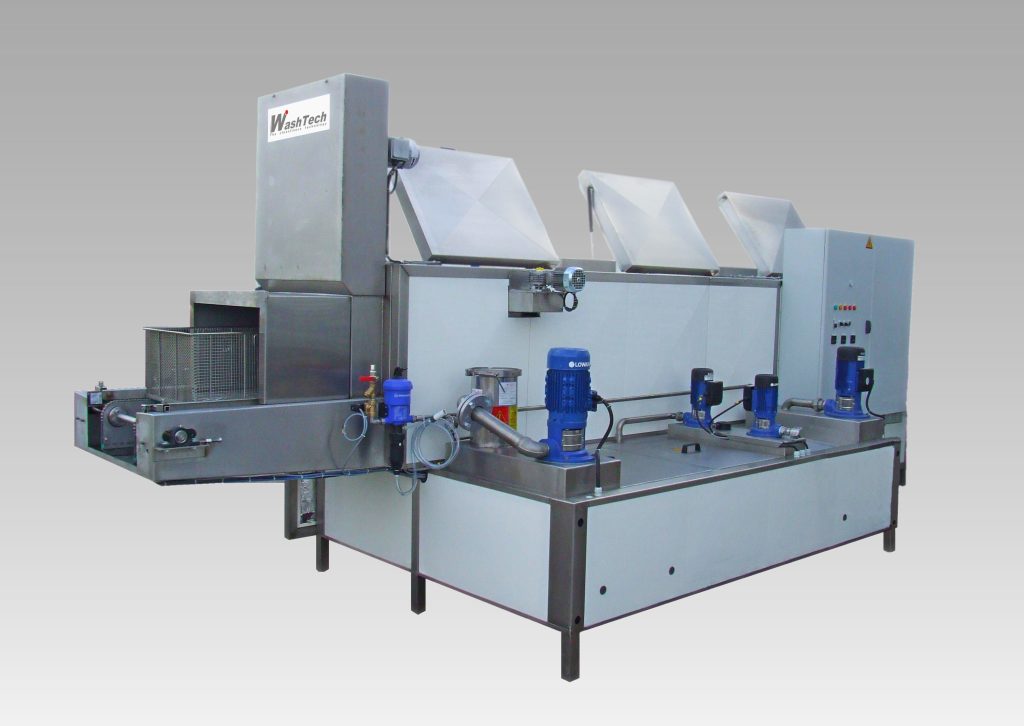In the manufacturing, automotive, and aerospace industries, cleaning metal parts is a critical process to ensure quality, safety, and production efficiency. Residues of oils, greases, and particles can compromise coating adhesion, reduce component lifespan, and even cause mechanical failures. However, companies face several challenges when trying to maintain high cleaning standards without affecting productivity or operating costs.
In this article, we explore the main problems in metal parts cleaning and how WashTech’s advanced solutions optimize this process, ensuring efficiency, uniformity, and environmental compliance.
Main Problems in Cleaning Metal Parts
One of the greatest challenges in cleaning metal parts is effectively removing oils, greases, dust, oxides, and metallic particles. These residues often result from machining, stamping, or heat treatment processes, making them difficult to remove without the right technology.
Manual or outdated cleaning methods can produce uneven results, leaving areas uncleaned or with invisible residues. This inconsistency can lead to manufacturing defects and affect the final product’s quality.
The use of aggressive chemicals or abrasive systems can damage the surface integrity of metal parts, causing corrosion or microcracks that impact performance.
Traditional cleaning methods often consume large amounts of water, energy, and solvents—driving up operating costs and harming the company’s environmental sustainability.
The use of polluting solvents and the generation of hazardous waste can result in regulatory penalties. Transitioning to eco-friendly and efficient cleaning systems is essential to comply with current standards.
To overcome these challenges, WashTech offers specialized technologies that optimize industrial cleaning and ensure efficient, sustainable processes. Below are the main WashTech solutions:
A continuous-flow system that cleans and dries each part in just 30 seconds. Ideal for production lines that require high speed without compromising quality.
Designed for large parts or industrial batches. Its technology allows deep cleaning of components used in heat treatment or high-demand applications.
A water-based system that provides high-precision cleaning. Perfect for applications requiring extreme purity, such as the aerospace or medical industries.
A hybrid technology that combines solvent cleaning and degreasing processes to remove high-surface-tension residues. Its design guarantees flawless results without affecting the structure of the parts.

Selecting the ideal cleaning system depends on various factors, such as the type of contaminants, the material of the parts, and the required level of cleanliness. Below are general recommendations:
Cleaning metal parts is a fundamental aspect of ensuring quality and efficiency in industrial processes. With WashTech’s advanced systems, companies can optimize their operations, reduce costs, and comply with environmental regulations without sacrificing productivity.
Improve your cleaning process today! Contact us for personalized guidance and discover the ideal solution for your company.
https://washtech.com.mx
https://www.youtube.com/watch?v=l3PhcDYn_b8